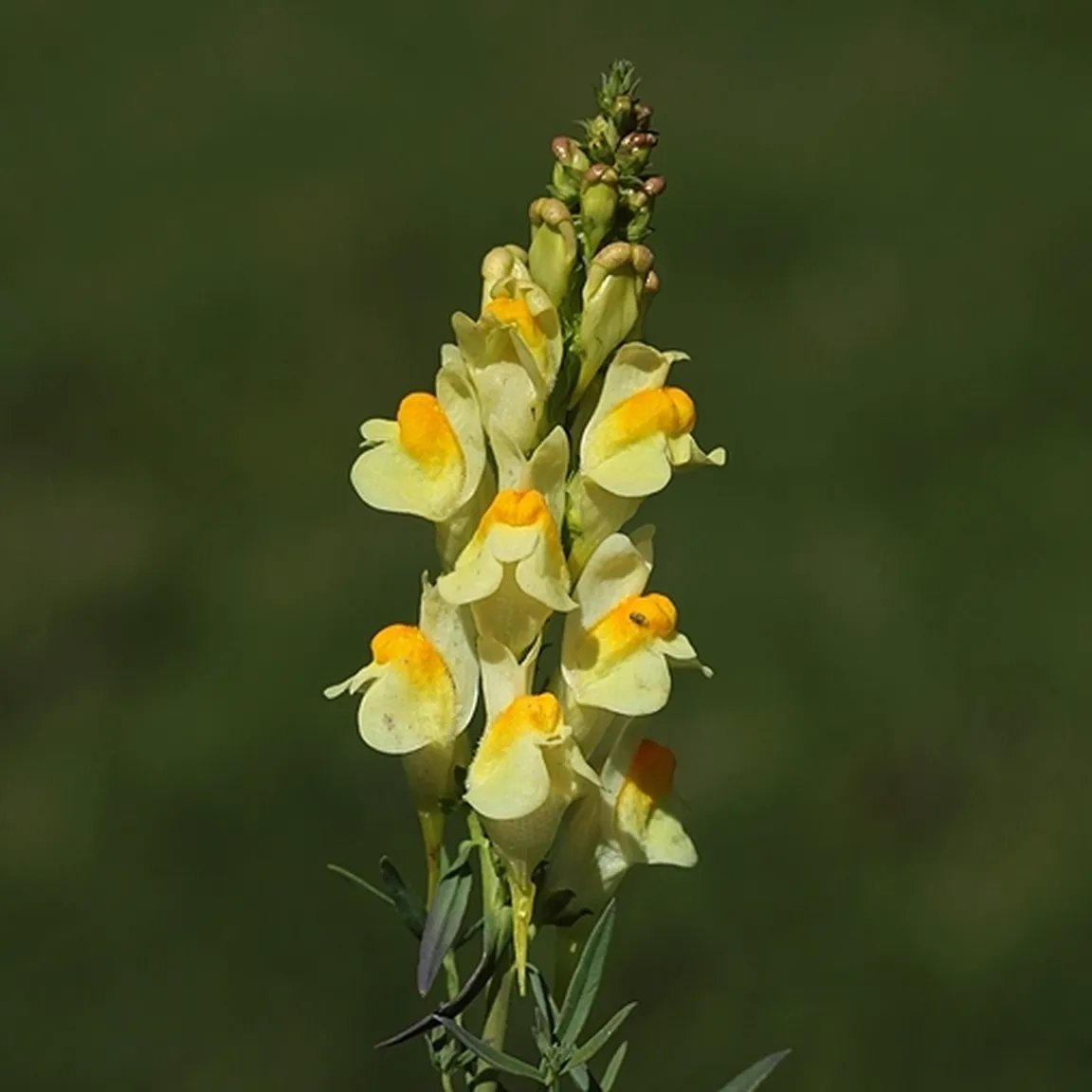Family: črnobinovke (Scrophulariaceae)
Flowering time: June–September
Size: 20–40 cm
Habitat: embankments, ruins, railway embankments, along paths and roads
The round stem of the common toadflax (Linaria vulgaris) is bare on the lower part, and often somewhat glandular-hairy on the upper part. The sessile, linear-lanceolate leaves of this herbaceous perennial are glabrous, three-veined, 2 to 5 cm long. The leaf margin is slightly rolled. The two-lipped, pale-yellow corolla has on the lower lip a vivid yellow thickening. The flower is, together with a more or less straight spur on its posterior part, 20 to 30 mm long. Usually glandular-hairy pedicels are as long as the calyx. The fruiting head is elongated-ovoid, and within it broad-winged seeds develop.
Common toadflax grows on barren soils in moderately warm habitats, preferring the sunniest locations. With the exception of the high mountains and areas covered by dense forest, it is widespread throughout Slovenia.
It is also known for its use in folk medicine, where it is used to relieve ailments of the excretory, circulatory, digestive and inflammatory systems, and also for disinfecting wounds.


